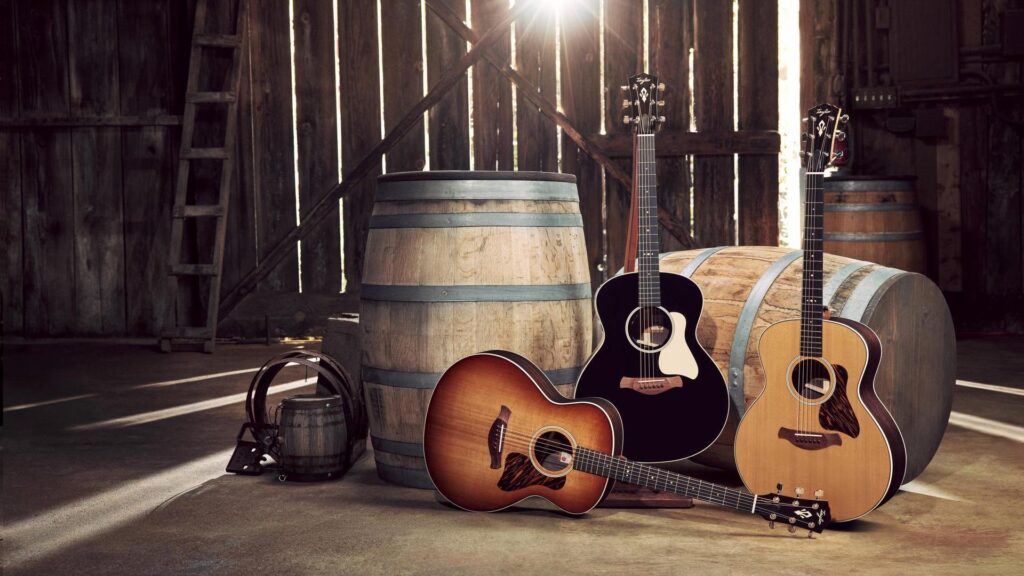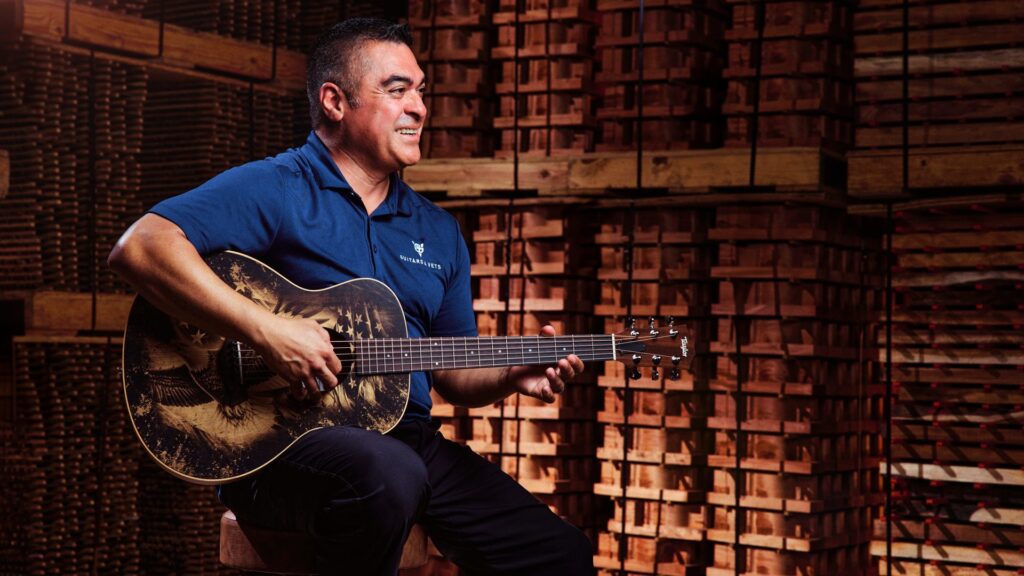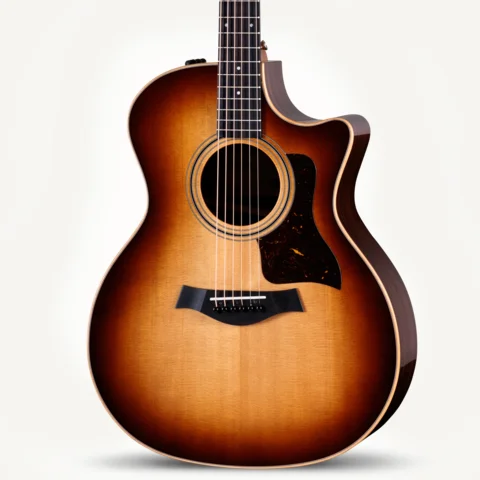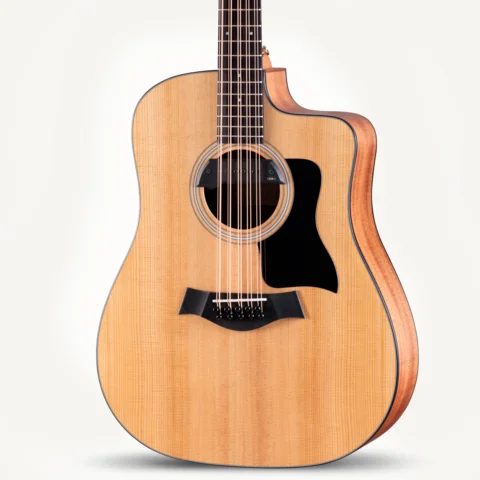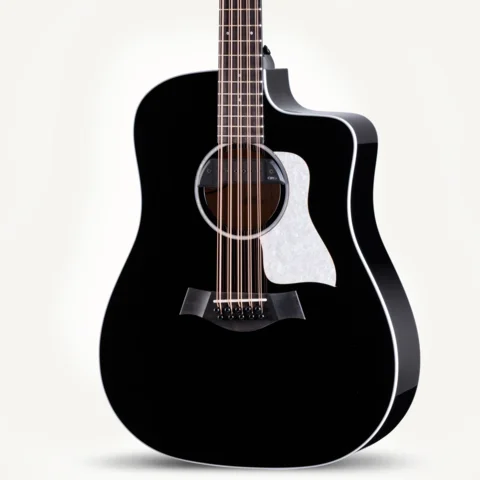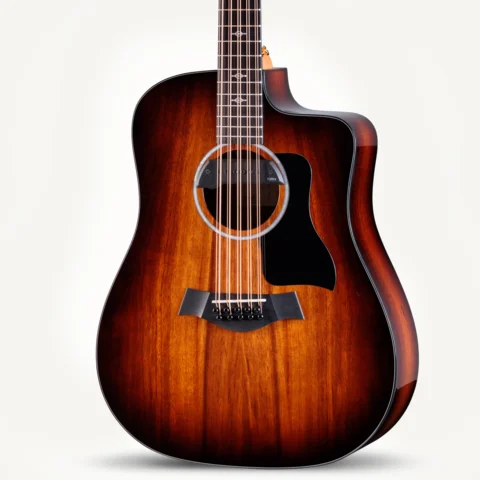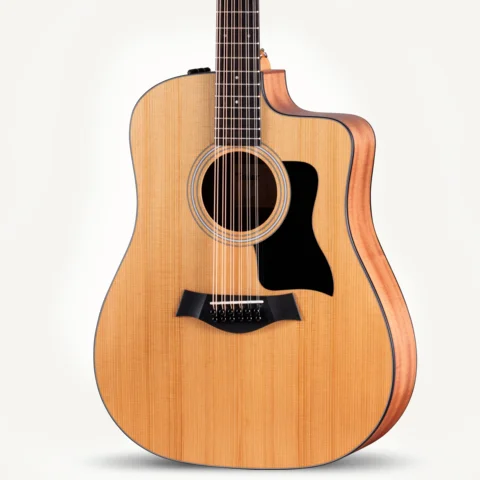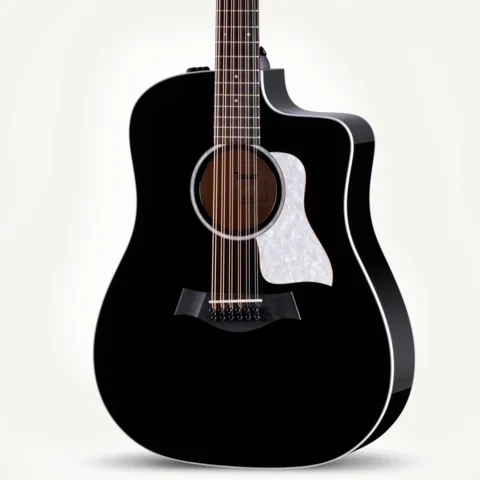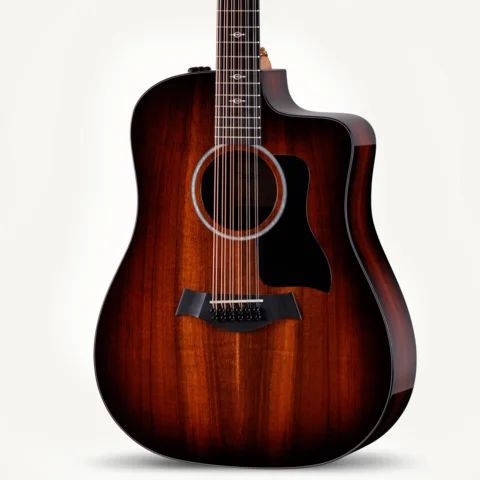The Craft
Editor’s Note: We’re pleased to introduce a new column by Taylor luthier Andy Powers. Each issue he’ll be sharing ideas that have inspired Taylor’s latest guitar designs.
Beginnings are complicated for me. The concept of a starting point encompasses more than a physical location, the inception of a thought, the first chord of a song. In a way, it marks the birth of a lifecycle. The first word, musical note, paintbrush stroke or saw cut implies a certain commitment. It sets a foundation for what follows. It establishes a landmark of sorts.
The ensuing creative journey is rarely a perfectly straight path. Typically, it meanders through uncharted territory, shifting course as it navigates unexpected obstacles that block forward motion like tree branches obstructing a trail through a woodlot. When that happens, mentally I climb to the top of the nearest hill to look for the fixed landmark at the starting point. This helps me gain perspective on the best direction to go.
As an instrument maker, the beginning of a guitar seems simple enough to identify: the first cut of wood, or possibly the first pencil line of a drawing. But for me, the landmark actually stands farther back as a response to a fundamental question: “Why do I want to build an instrument in the first place?” The conclusion I’ve arrived at is so I can play and hear others make great music.
My life as a guitar maker didn’t begin with this revelation. There were other motivations. When I was younger, the pleasure of making something from wood was enough. As a small boy, I loved cutting, shaping and gluing wood. I took enormous satisfaction from even peripheral chores like sharpening tools. I still like sharpening tools, and usually sport a bald spot on my left arm where I’ve recently tested a keen edge. As a kid, I also loved to hold and play guitars. I adored their shapes and the feel of the strings under my fingertips. When I got my hands on a piece of wood big enough to make a guitar, the fuse was lit. Mixing the two loves was such an enrapturing experience it didn’t even matter that my first guitar was an utter failure. The enjoyment from the process was enough of a reward. (The fact that the guitar imploded in dramatic fashion, sending splinters flying, when I tried to tune it was also pretty exciting as a boy.) In my case, building guitars began as a curiosity and became a habit that I couldn’t quit.
After building enough guitars to become familiar with the process and keep them from collapsing, I slowly began to expand my efforts in pursuit of a foundation stronger than the pleasure of making shavings pile up on my workbench. The heaps of sawdust I’d been busy creating were beginning to choke my forward path. Climbing up my mental hill and looking back as far as I could, I saw a conceptual mountain towering in the distance. My introspection led me to the conclusion that I liked music, and to make musical sounds one needs instruments. This wasn’t a revelatory flash of thought like a light switch flipping on; it felt more like a slow expansion into being, like the sun rising on a new personal dawn.
An instrument that makes a musical sound is the start and the end goal. I slowly formed opinions of what a “musical” sound is from my own observations, but I was floored much later by the precise clarity of a definition offered by the scientist Herman Helmholtz. He noted over a hundred years ago that on a foundational level, a musical sound is one of order. The natural world will offer two varieties of sound wave: chaotic ones and orderly ones. Our ears are uniquely equipped to interpret orderly, repetitive sound waves as musical. Sounds without regular form or consistency are heard as noise.
Some musicians will quickly defend the complicated sounds they make and claim the line is blurred. But in reality, even those musicians who experiment with sounds first appearing as noise are bringing order to complex forms and discovering consistency and regularity. Musicians can train their ears and minds to hear order in complicated forms. Lots of casual listeners will hear an abstract jazz tune and scoff it away as a bunch of noise because they haven’t learned the architecture of the piece. The first time I heard classical Indian music, it seemed completely arrhythmic to me, because I didn’t know how or when to count the beats. Even with these complex musical forms, at the core level, a musical sound is one with order. With this identity of musical sound in mind, the goal of a guitar maker is to create an instrument that offers orderly and consistent sound in order to make music.
This is a principal that guided the development of our new Grand Orchestra guitar. Lots of large-body guitars have extra, uncontrolled sounds being formed when they vibrate in addition to the notes played. That is a recipe for a rough and stormy sonic seascape. It creates a setting in which some notes will roll through the turbulent waters, while others clash with conflicting vibration and are swallowed up. The results of the Grand Orchestra’s design are notes that consistently speak out with clear purpose.
From my philosophical perch atop a desire for great music, the complexities encountered during a guitar’s creation are less intimidating. Decisions of design, material choices, and even working methods can be answered in a way that enhances and benefits the core value of the guitar. Considerations such as the shape of an instrument or whether it has a cutaway can be answered by weighing what will result in the best music.
I’ve found that this guiding desire for great music shines its influencing light past obvious structural decisions. When a guitar is powerfully evocative aesthetically, the emotions and associations a player senses from an instrument can have a noticeable effect on the music they perform. Seemingly minor considerations, such as an inlay or a trim detail, can convey musicality. A regal-looking guitar may very well make for a more regal-sounding performance because it coaxes from the player qualities they may not have discovered in another instrument.
At a fundamental level, what I personally strive for, and what we all seek here at Taylor Guitars, is great music. We arrive at that finish line by starting with this intent and guiding our efforts until we deliver an instrument that gives an expressive voice to a player’s music. As a guitar builder and player, I’m fortunate to partake in this creative process every day and savor the endeavor. I still love to sharpen my tools and watch shavings and sawdust pile up on my workbench. I still adore the shape of a beautiful guitar and the feel of new strings under my fingers. But now, these are the icing on the cake. We get to help create great music. That’s why we do what we do.



























